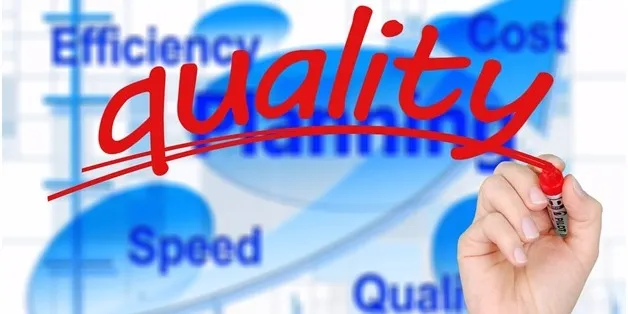

How to Measure the Quality of a Product by David Garvin
Improving the product quality is one of the most important functions of a leader. However, it is a very subjective substance for both employees and customers...

Improving the product quality is one of the most important functions of a leader. However, it is a very subjective substance for both employees and customers. One user may assume that the product fully meets his needs while the other will complain about the shortcomings. Moreover, even your teammates may also have different opinions!
So what is the improvement of product quality, a fundamentally important business goal or the misplaced perfectionism leading to nothing but the loss of time and money? Where is the balance? Can we treat quality as something tangible and measurable?
You’ll find the answer in the lines below. Let’s first divide the concept of quality into separate components and then learn how to manage every aspect of it along with Lucy Adams, an outsourcer from Bestessay4u.
What Do Customers Want?
David Garvin published his model in 1987 when consumers were no longer assured of quality products created in the United States. He believed that the traditional methods of quality management had not paid off for a reason they were aimed at protecting consumers from what they don’t want instead of focusing on what they really want.
Garvin argued that companies always need the approval of customers, but at the same time set individual quality standards.
Garvin’s model examines the perception of the customer through the prism of high-quality products and services of the company and its competitors. According to Garvin, "Quality is not just a problem to be solved but also a competitive advantage."
Eight Criteria of Quality
Although quality is something ephemeral, something that is born in consumer perceptions and is shaped in a certain way, Gavin managed to identify eight criteria that allow consumers to define the quality of goods and services:
1. Execution. How good is this product? How good is it compared to the competitor’s one?
2. Features. Features are the minor but surprising criterion. Sometimes consumers appreciate these pleasant things much more than the actual performance of the product or competent service delivery. Take, for example, free drinks onboard.
3. Reliability. How long will the product retain its quality and functions? Obviously, the degree of reliability depends on the goal of the product. For example, car tires must be very reliable for obvious reasons.
4. Compliance with standards. How long will the product or service meet the standards? Garvin referred to the research of Genichi Taguchi who argued that in many cases it is possible to predict whether the product or service will be successful in the future. For example, sales are falling gradually and follow certain predictable patterns of behavior while compliance with standards is getting worse. Examples of poor compliance: labels with spelling errors, delay in delivery, errors in operation, etc. Standards become obsolete with time, which inevitably leads to the decrease in sales.
5. Durability. This criterion defines how much the consumer will benefit from the product service before it starts to lose its quality. For example, a piano can outlive its owner while beach shorts may be relevant only for one season.
6. Service. How fast can you return the good and how long it will take to fix it? This includes both technical fix and the rate at which the company handles complaints of customers and takes decisions.
7. Aesthetics. Many companies are trying to comply with the six previous criteria, putting aesthetics aside. Well, the opposite also happens. Sometimes products are aesthetically beautiful but unsuitable for use. Aesthetics is how the product looks, smells, sounds and feels.
8. Perceived quality. That’s the customer's perception of the overall quality or superiority of a product or service with respect to its intended purpose, relative to alternatives. Garvin treats reputation as the main aspect of perceived quality.
How to Apply Garvin’s Model to Practice
Garvin claims that you should not follow all eight criteria to be successful. Moreover, sometimes it is even harmful because it provides too much while clients are interested in simple, understandable product. Therefore, you should determine which criteria are the most important for your customers.
Some companies believe that they can be trendsetters in business, and intentionally do not analyze the needs of consumers. However, this can bring success only to the giants like Apple as people listen to them and trust them. As for the others, they need to study the market along with the needs and demands of potential clients.
Don’t forget that you should follow the perception of your customers, not yours or your employees! I wish you all the best in your business endeavors!






